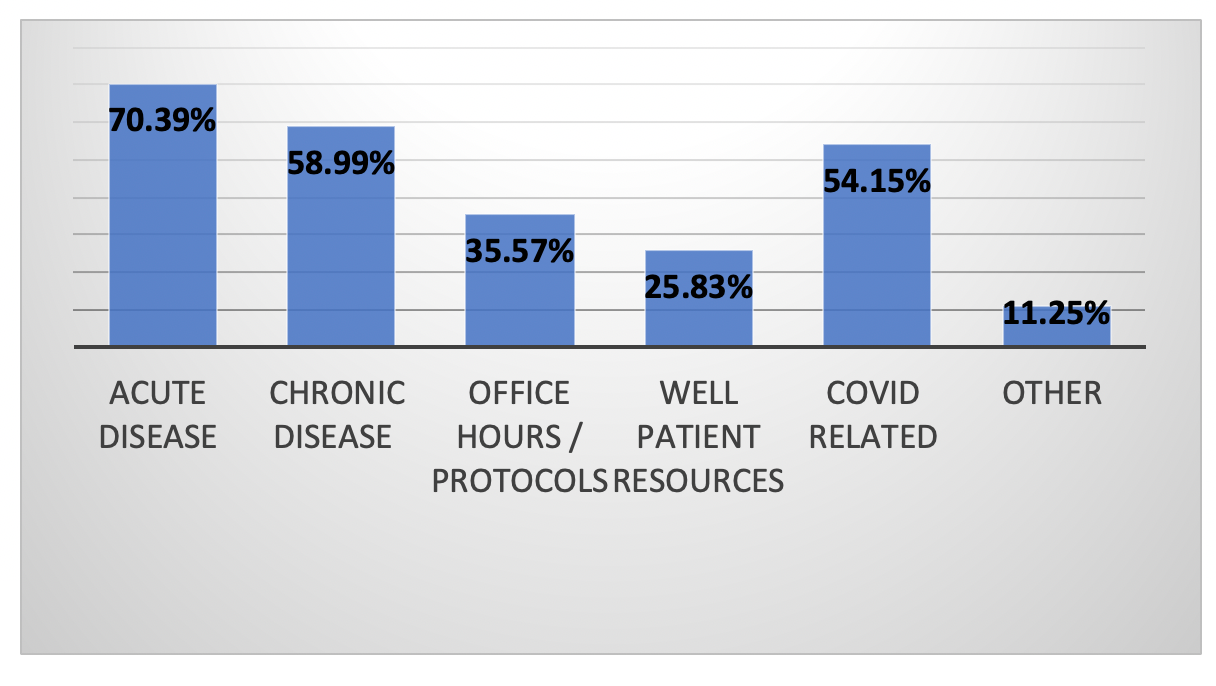- Sustainability
- DE&I
- Pandemic
- Finance
- Legal
- Technology
- Regulatory
- Global
- Pricing
- Strategy
- R&D/Clinical Trials
- Opinion
- Executive Roundtable
- Sales & Marketing
- Executive Profiles
- Leadership
- Market Access
- Patient Engagement
- Supply Chain
- Industry Trends
MJH Life Sciences' State of the Physician Survey: Patient Communication During COVID-19
A new series of surveys has been released by MJH titled State of the Physician. The first focuses on how physicians are communicating with their patients during COVID-19.
Since the beginning of the COVID-19 pandemic, the healthcare industry has been in crisis mode. From individual practices all the way to big pharma companies, it has been tested to the max. One of the most affected groups of professionals within the healthcare industry has been physicians. They are dealing with overcoming new obstacles like how to safely conduct patient visits and ensuring their personnel are taking proper health precautions. To highlight these challenges, MJH Life Sciences Healthcare Group has conducted a series of surveys with participating physicians titled, “State of the Physician.” Pharmaceutical Executive will be providing a collection of articles in the following weeks, each highlighting one of the surveys.
The first survey we will highlight focused on patient communication during COVID-19. Over 1,300 respondents were asked a series of questions; spanning from objective to open ended. The respondents represented nine different specialties; the majority were from pediatrics (311) and family/general practice/internal medicine (243). The surveys were conducted from May 22-26.
Of the total respondents, 65% were from private or group practices. Over 1,000 were physicians, representing 78% of the total, achieving a high rate of response from the survey’s core audience.
Across all specialties, respondents reported an increase in communication within five different methods; telephone, email, telehealth, health-system patient portals, and teleconference apps. While there has been a steady increase in how health professionals are reaching their patients, the overall frequency of communication has remained mostly the same since the beginning of COVID-19, according to the respondents.
When the respondents are communicating with their patients, the majority of the topics discussed are acute and chronic disease. Closely following chronic disease are COVID-related topics. Figure 1, shown below, provides a more detailed breakdown on what practitioners are talking about with their patients during this time. The “other” category contained 149 responses – 38 of which were specified as psych-related.

In particular, when it comes to the respondents’ practices communicating with patients that have a chronic disease, most reported that COVID-19 did not have a large impact on three specific topics; medication adherence, labs and diagnostics, and general follow-ups. Figure 2, shown below, presents the breakdown by weighted average.

This shows that there is a consistency across the board in regard to chronic disease communication.
The results of the survey were also broken down by the specialties as mentioned earlier. Many of the physicians expressed an interest in telehealth maintaining an important role even after COVID-19. Pediatricians said that telemedicine will continue to play an important role (7 on a scale of 10) in handling their return to office. The majority also said that patient screening and increased office hours will be focused on more moving forward. Like pediatricians, most of the dermatologists surveyed said they will continue using Telederm services and expect it to remain a large part of their practices moving forward.
Nearly half of the psychiatrists (47%) reported that they were new to telepsychiatry and almost two-thirds (61%) found it to be beneficial; only 27% reported using it before the pandemic. Another important finding that was brought to attention amongst psychiatrists was an increase in isolation/stress-related symptomatology related to the pandemic. Out of 175 responses, about 97% reported seeing an increase in anxiety in their patients. In addition, out of 136 responses, nearly 76% said they were noticing an increase in depression.
Looking forward to reopening, there were concerns cited by all respondents across the board. The concern that garnered the most attention was logistics in ensuring a safe environment. Of 1,010 responses, over 76% cited this would be an area of concern. Following, the risk of exposing themselves to COVID-19, a worsening of the pandemic/increase in cases, and uncertainty about the futures of their practices, were also items brought to the forefront of concerns.
During this time of uncertainty, physicians are clearly facing many challenges and have concerns in overcoming them. One of the positives, however, is that a more virtual-oriented form of healthcare has emerged as a viable option for practices even after COVID-19. As a result, pharma companies should expect to be leaned upon for virtual services not only in the present, but also in the future.
For the infographic of this survey, click here.
For more information on the State of the Physician reports, please contact Executive Vice President, Healthcare - MJH Life Sciences, Brian Haug at BHaug@mmhgroup.com.
Fake Weight Loss Drugs: Growing Threat to Consumer Health
October 25th 2024In this episode of the Pharmaceutical Executive podcast, UpScriptHealth's Peter Ax, Founder and CEO, and George Jones, Chief Operations Officer, discuss the issue of counterfeit weight loss drugs, the potential health risks associated with them, increasing access to legitimate weight loss medications and more.
The Transformative Role of Medical Information in Customer Engagement
October 3rd 2024Stacey Fung, Head of Global Medical Information at Gilead Lifesciences, delves into the evolving role of Medical Information (MI) in the pharmaceutical industry. Covering key topics like patient engagement through omnichannel strategies, combating misinformation, and leveraging AI to enhance medical inquiries, the conversation with Stacey highlights MI's critical role in ensuring patient safety and supporting drug development. She also shares her professional journey and tidbits for early career professionals on professional development.
